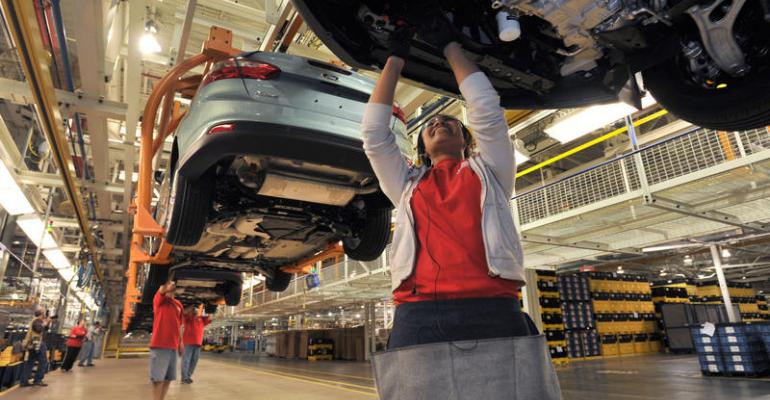The robust growth of the Mexican automotive-coatings market over the past six years appears likely to end in 2017, an industry group predicts.
Mexican production of automotive coatings almost doubled from 2010 to 2015, going from 15.1 million gallons (57.3 million L) to 28 million gallons (106.2 million L), according to the Mexican Association of Paint and Ink Producers.
However, in 2017 the situation could be different owing to what association President Javier Maldonado calls “a complex panorama.”
“We don’t believe that 2017 will follow the (upward) trend due to several issues,” he tells WardsAuto.
One reason is the weakening Mexican peso, falling from MP18.5:$1 on Nov. 8, 2016, the day Donald Trump – who campaigned against what he called trade policies unfavorable to the U.S. – was elected U.S. president, to MP21.9:$1 on Jan. 19, the day before Trump’s inauguration, making imported paint and coating inputs and machinery more expensive.
Moreover, with the new Trump Admin. in power, there were “some investments that had been announced but will not happen, with the new and complicated U.S.-Mexico relationship,” he says, referring to Ford’s withdrawal of a planned $1.6 billion factory in San Luis Potosi. “We expect a significant impact.”
The three key players in Mexico in the automotive-coatings sector largely are American: PPG, which has affiliated with Mexico’s Comex to become the country’s largest paint producer; BASF; and Sherwin-Williams.
Amid this uncertainty, the auto-coatings industry and the entire automotive sector await the possible renegotiation of NAFTA that Trump has promised to pursue.
“We don’t want to contribute to speculation, but the most important industrial relationship of NAFTA is the automotive one,” says Eduardo J. Solis, executive president of the Mexican Automotive Industry Assn. “Nearly 40% of the Mexican production is bound to U.S. auto parts, products or materials. We are the No.1 automotive-parts exporter for the U.S. and they are No.1 for us.”
That said, the strong Mexican domestic market could ease concerns about a steep fall in production, says Guillermo Rosales, CFO of the Mexican Association of Automotive Distributors.
“The national automotive market grew by 18.6% (in 2016 compared with 2015), with 1,603,632 new units sold inside Mexico,” Rosales says, “So we are at the point where we could expect to be destabilized by a social demonstration and massive protests but not by the protectionism, ignorance or political decisions taken by the new U.S. administration.
“December was a record month because our northern neighbor bought 9.6% more new cars than the same month of 2015. We don’t know if the new administration will implement new customs tariffs but, if it does, it would be violating the current NAFTA terms.”
Maldonado says the local coatings industry remains pessimistic: “It will be a complex situation for us and for everyone else. We need to get creative to boost the domestic market even more if we want to avoid destabilization.”
The Mexican paint industry overall reported an annual growth rate of nearly 2.5% in 2016, while 2017 year-on-year growth is expected to be just 1.2%.





